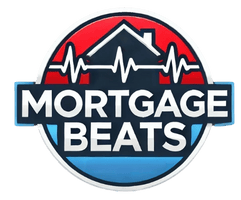The Fundamental Difference Between Down Payments and Closing Costs
Down payments and closing costs represent two distinct categories of homebuying expenses that serve different purposes. The down payment is your equity stake in the property, typically ranging from 3-20% of the purchase price, paid directly toward the home’s value. Closing costs, on the other hand, are fees for services and transactions required to finalize your mortgage, usually totaling 2-5% of the loan amount.
While your down payment reduces the amount you need to borrow, closing costs don’t decrease your loan principal. These fees cover essential services like appraisals, title searches, lender charges, and government recording fees. Understanding this distinction is crucial because it affects how you budget for homeownership—the down payment comes from your savings, while some closing costs can sometimes be financed or offset by seller concessions.
At NorCal Real Estate & Financial Service, we provide clients with clear breakdowns of these costs early in the homebuying process. Our transparent approach ensures buyers understand exactly where every dollar goes when purchasing a home.
Breaking Down Typical Closing Cost Components
Closing costs encompass numerous individual fees that fall into three main categories: lender-related charges, third-party services, and prepaid expenses. Lender fees include origination charges, underwriting fees, and discount points (if purchasing a lower interest rate). Third-party costs cover the appraisal, title insurance, escrow services, and recording fees with local government offices.
Prepaid expenses differ from traditional closing costs because they represent advance payments for items you’ll use over time, such as homeowners insurance premiums, property taxes, and mortgage interest that accrues between closing and your first payment date. While these aren’t technically fees, they’re still part of the cash you’ll need at closing. Some lenders require establishing an escrow account with several months of reserves for taxes and insurance.
NorCal Real Estate & Financial Service provides itemized closing cost estimates during pre-approval. We explain each fee’s purpose and whether it’s negotiable, helping buyers avoid surprises at the closing table.
How Down Payment Amounts Affect Your Mortgage
Your down payment percentage directly impacts your loan terms and ongoing costs. Conventional loans typically require at least 5% down, while FHA loans allow 3.5%. Putting down 20% or more eliminates private mortgage insurance (PMI) on conventional loans, potentially saving hundreds monthly. Larger down payments also mean borrowing less, which reduces both your monthly payment and total interest paid over the loan’s life.
However, down payment size doesn’t directly affect most closing costs. While some fees like title insurance have rates based on loan amount (and thus purchase price), the majority of closing costs remain relatively stable regardless of whether you put down 3% or 30%. This means buyers making smaller down payments should budget carefully, as closing costs represent a larger percentage of their total cash outlay.
NorCal Real Estate & Financial Service helps clients evaluate down payment strategies that balance upfront affordability with long-term savings. We analyze how different down payment amounts affect both immediate requirements and future mortgage expenses.
Calculating Your Total Cash-to-Close Figure
The “cash-to-close” amount combines your down payment with all closing costs and prepaids to show the total funds needed at settlement. This figure appears on your Closing Disclosure three days before closing and can be estimated earlier using the Loan Estimate form provided after mortgage application. To calculate it yourself, add your down payment to the sum of all closing costs, then subtract any earnest money deposit you’ve already paid.
Remember that some costs may be paid outside of closing (POC), such as home inspections or initial deposits for utilities. These don’t appear in your cash-to-close total but still affect your overall homebuying budget. First-time buyers often underestimate cash-to-close by focusing solely on down payment savings, not realizing closing costs can add thousands to their upfront requirements.
NorCal Real Estate & Financial Service provides customized cash-to-close worksheets that update throughout the transaction. Our detailed projections help buyers plan their finances accurately from offer through closing day.
First-Time Buyer Programs That Reduce Both Costs
Numerous programs help reduce both down payment and closing cost burdens for eligible buyers. FHA loans allow down payments as low as 3.5% and permit sellers to contribute up to 6% of the purchase price toward closing costs. VA loans offer no-down-payment options for qualified military borrowers and limit certain closing fees.
State and local housing agencies often provide down payment assistance grants or low-interest second mortgages that can cover both down payments and closing costs. Some programs, like the Good Neighbor Next Door initiative, offer substantial discounts on home prices for teachers, firefighters, and other public servants. These programs frequently have income limits and home price caps but can make homeownership possible for those who couldn’t otherwise afford the upfront costs.
NorCal Real Estate & Financial Service maintains an extensive database of assistance programs. We help clients identify and apply for every benefit they qualify for, potentially saving thousands in upfront expenses.
Strategies to Minimize Closing Costs Without Sacrificing Protection
Savvy buyers can reduce closing costs through several legitimate strategies. Shopping around for third-party services like title insurance and home inspections can yield significant savings, as these fees vary by provider. Negotiating lender origination fees or asking the seller to pay a portion of closing costs (common in buyer’s markets) can also help.
Some lenders offer “no-closing-cost” mortgages that roll fees into the loan balance or offset them with slightly higher interest rates. This approach makes sense if you plan to refinance or sell within a few years. Another tactic involves timing your closing late in the month to minimize prepaid interest charges, though this affects your first mortgage payment date.
NorCal Real Estate & Financial Service helps clients implement these strategies effectively. We know which costs are negotiable and which are fixed, ensuring buyers don’t overpay while still maintaining essential protections like thorough title searches and proper insurance coverage.
The Relationship Between Down Payment and Closing Costs
While down payments and closing costs are separate expenses, they interact in important ways. Buyers putting down less than 20% often face additional costs like mortgage insurance premiums that increase monthly payments. Some loan programs with low down payment requirements compensate by charging higher upfront fees or interest rates.
The down payment percentage can also affect which closing costs apply. For example, FHA loans require both an upfront mortgage insurance premium (added to closing costs) and ongoing monthly premiums when down payments are below 10%. Conventional loans with less than 20% down carry private mortgage insurance that eventually cancels, but only after sufficient equity is reached.
NorCal Real Estate & Financial Service analyzes these interactions for each client. We demonstrate how different down payment amounts affect both immediate closing costs and long-term loan expenses, helping buyers make informed trade-offs.
Common Misconceptions About Home buying Expenses
Many first-time buyers mistakenly believe closing costs include their down payment or that the down payment covers all upfront expenses. Others assume the 3% down payment they’ve heard about means they only need 3% of the purchase price saved, not realizing closing costs require additional funds. Some think all closing costs are fixed and non-negotiable, when in reality many can be reduced through smart shopping.
Another common misunderstanding involves prepaid items—some buyers don’t realize they’re prepaying expenses they would incur anyway, like property taxes and insurance. There’s also confusion about what costs can be financed versus what must be paid upfront. Clearing up these misconceptions early prevents stressful surprises later in the process.
NorCal Real Estate & Financial Service prioritizes homeowner education to prevent these misunderstandings. We provide clear explanations and realistic estimates so buyers can budget accurately from the start of their home search.
What Gets Rolled Into the Mortgage vs. Paid Upfront
Certain costs can be financed into your mortgage rather than paid upfront at closing, while others cannot. The down payment must always come from your funds (or approved gift money). Most traditional closing costs like origination fees and title insurance must be paid at closing, though some lenders offer to roll these into the loan balance for a higher interest rate.
Prepaid items like property taxes and insurance can sometimes be financed if they push your loan-to-value ratio beyond certain limits. Discount points (used to buy down your interest rate) are typically paid at closing but effectively get “financed” through lower monthly payments. Understanding these distinctions helps buyers determine how much cash they’ll truly need on hand versus what can be spread over the loan term.
NorCal Real Estate & Financial Service explains these financing options clearly. We help clients structure their loans to balance upfront cash requirements with long-term affordability based on their unique financial situations.
How NorCal Real Estate & Financial Service Helps Budget for All Costs
Our comprehensive approach to homebuying costs begins with early education and personalized estimates. We provide clients with detailed breakdowns of both down payment requirements and closing cost projections during pre-approval, updated as they progress through the homebuying process. This prevents last-minute financial surprises and allows for strategic planning.
We identify every potential cost-saving opportunity, from down payment assistance programs to negotiable closing fees. Our relationships with lenders and service providers often secure better terms than buyers could obtain independently. For clients with limited cash reserves, we explore creative solutions like seller concessions or delayed financing exceptions.
With NorCal Real Estate & Financial Service, buyers gain confidence in their financial planning. We ensure clients understand exactly what they’re paying for and why, transforming complex fee structures into clear, manageable homebuying budgets.
Conclusion
Understanding the distinct roles of down payments and closing costs is essential for accurate homebuying budgeting. While the down payment builds your equity stake, closing costs cover the transactional expenses of securing and finalizing your mortgage. Together, they determine your total upfront investment in homeownership.
NorCal Real Estate & Financial Service demystifies these costs through transparent explanations and personalized planning. Our expertise helps buyers navigate the financial aspects of purchasing a home with confidence, ensuring they’re prepared for both immediate expenses and long-term mortgage commitments.
Ready to understand exactly what your home purchase will cost? Contact NorCal Real Estate & Financial Service today for a detailed cost analysis tailored to your target price range and loan scenario. Let us help you plan wisely so you can focus on finding your dream home, not worrying about unexpected expenses. With the right guidance, you’ll approach closing day fully prepared and financially confident.
Ready To Get The Best Financial Advise, Email us at: Chris@mortgagebeats.com



